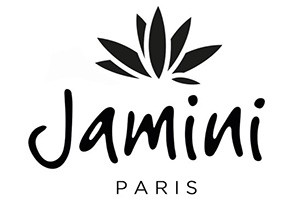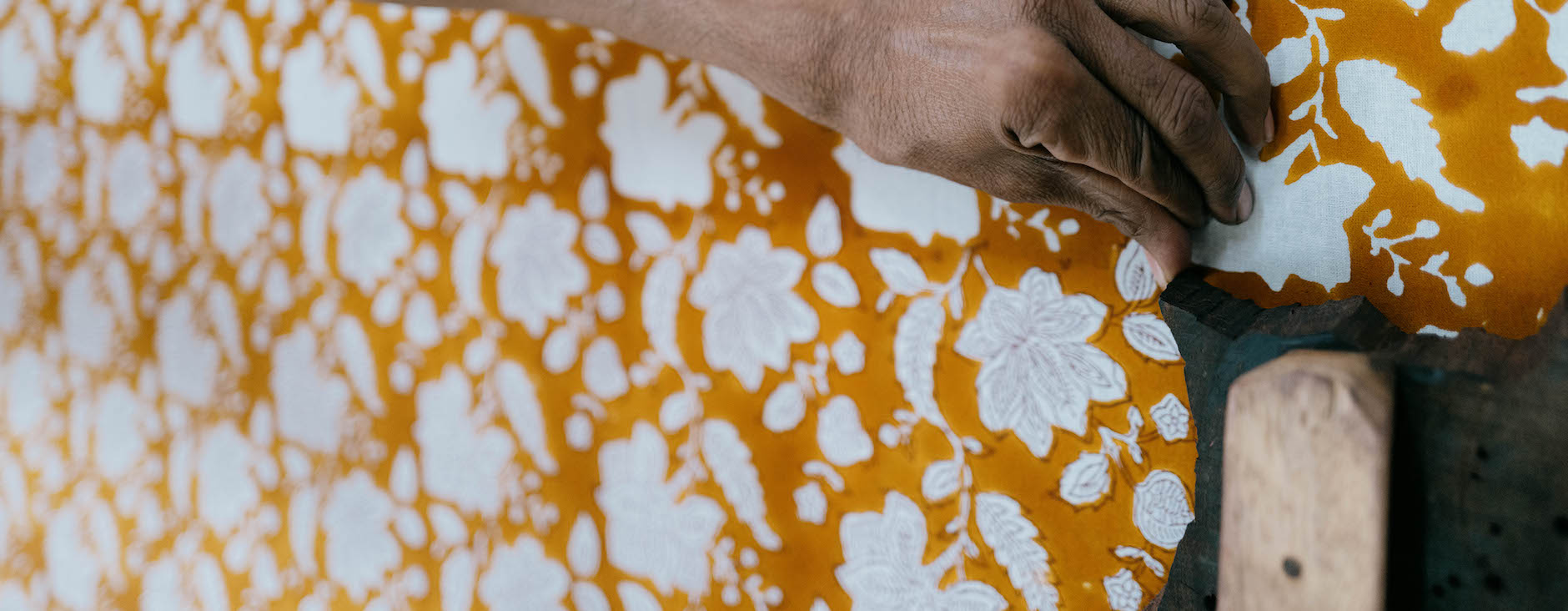Block printing - imperfectly perfect printing from India
Block Print: Perfectly Imperfect
At Jamini, woodblock printing – or block print – is more than just a technique: it is a passion, a vibrant tribute to Indian ancestral craftsmanship. This demanding and profoundly human process has spanned centuries and continues today to enhance our cushions, quilts, rugs, and everyday accessories.
To better understand what makes this technique so special, we spoke with Usha Bora, founder of Jamini. Franco-Indian, she perfectly embodies the meeting of traditional craftsmanship and a contemporary perspective. Her intimate connection with block print reveals the full richness of this living art.
© Sophie Denux
An Ancient Craft
“Block print in India has existed for several centuries and is practiced in different regions of the country, with a strong concentration in Rajasthan,” explains Usha. While traces of textile printing can be found as far back as antiquity in China or Egypt, it is in India that this art has truly flourished, notably thanks to the use of natural dyes and finely carved patterns.
“What fascinates me most is how each element fits together like a puzzle once the block is carved,” she continues. “With each impression of a part of the pattern using a specific block, one color appears. Then comes the second block, which fills in another section, thus revealing a second color. This process, built up layer by layer, truly brings the design to life.”
A Know-How Passed Down, Never Taught in School
Block print is not taught in schools: it is passed on in workshops, from father to son, mother to daughter. “Artisans learn their know-how from their parents and grandparents – there’s no official school for this technique. The transmission happens from generation to generation, much like the Indian mythological tales that are passed on through oral tradition.”
Each artisan is responsible for one step: from carving the sesham wood to positioning the fabric, and of course the printing itself. A complex pattern can require up to ten different blocks. “It’s a craft of remarkable precision that demands great expertise,” notes Usha.
© Jérôme Galland
© Sophie Denux
Perfectly Imperfect
Unlike digital printing, block print bears the mark of the human hand. And it is precisely this irregularity that makes it so beautiful. “Each artisan has their own way of printing, which makes every creation unique. The colors interact differently with humidity and light, making each print singular.” These slight variations, these small rough edges in the design, are not flaws: they are the reflection of a living art. Block print is, as Usha says, “perfectly imperfect.”
Printed cushions - © Sophie Denux
When Tradition Meets Creation
At Jamini, the challenge is twofold: to preserve the authenticity of the traditional gesture while infusing it with a contemporary aesthetic. “We have a deep respect for the heritage of block print. But rather than freezing this art in time, we seek to gently evolve it, exploring new color combinations and reinterpreting classic patterns.”
The secret? A relationship of trust with the artisans. “Rather than imposing changes, we work hand in hand. This balance allows us to preserve its authenticity while ensuring that block printing continues to captivate today’s consumers.”
A Dialogue Between India and France
Jamini’s universe is deeply nourished by the founder’s dual culture. “I grew up in India, immersed in craftsmanship and the richness of colors. Living in France means evolving in a world of museums, textures, and subtlety. This combination inspires me every day.”
“India gave me a love of vivid pigments, dazzling light, spontaneity. France offered me balance, precision, nuance. My inspiration is rooted in India, but the way I translate it into design is resolutely French – and it’s this fusion that makes Jamini so unique.”
An Ecological and Human Impact
Block print is also a respectful craft. “We use REACH-certified dyes to guarantee optimal durability over time while limiting environmental impact. Plant-based dyes are beautiful, but they fade too quickly for everyday use.”
Beyond ecology, the issue is also social. “This technique supports many artisans, men and women, throughout the production chain. It plays a key role in preserving unique know-how at a time dominated by technology.”
A Growing Need for Authenticity
Today, handmade work is regaining a central place in the hearts of consumers. “In a world where everything moves so fast, where we’re overwhelmed with information, many people feel the need to reconnect with the real.” Returning to craftsmanship, raw materials, and gestures passed down through centuries embodies this search for meaning. “It’s almost a form of meditation: repeating precise, meticulous gestures aligns the mind and body with beauty.”
At Jamini, every piece tells a story. A story of passion, patience, imperfection, and beauty. A story we are proud to share.
© Sophie Denux - Printed table linens






